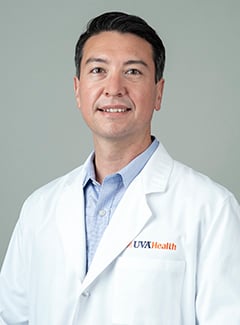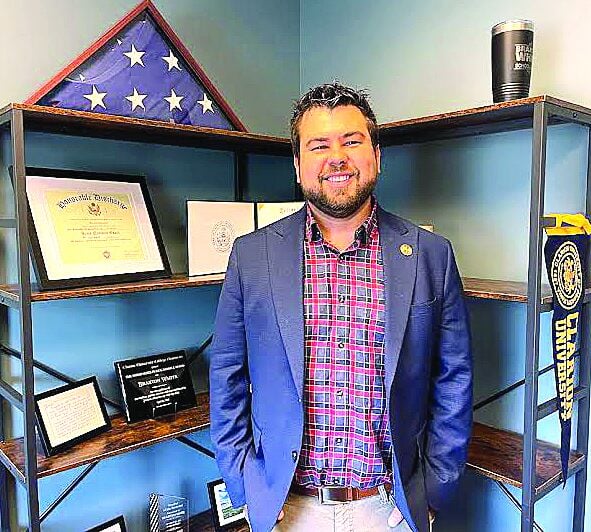Report on the Retirement of Betty Uehling and the ECFE Program’s Contribution to Sustainable Development Goals
This report details the career of Betty Uehling, the retiring Early Childhood Family Education (ECFE) Coordinator for New Ulm School District 88, and analyzes the program’s significant alignment with several United Nations Sustainable Development Goals (SDGs). After 33 years as coordinator, Ms. Uehling will officially retire on August 11, leaving a legacy of community-focused early childhood development.
Career Trajectory and Program Leadership
Betty Uehling’s career in early childhood education began at North Dakota State University and included roles in Montana and Park Rapids, Minnesota, where she was instrumental in building an ECFE program from its inception. She joined the New Ulm School District in January 1991 as a teacher and was promoted to coordinator in August 1992. A key initial task was the state licensing and establishment of the district’s new preschool program, demonstrating her expertise from the outset.
ECFE Program Framework and Alignment with SDG 4: Quality Education
Under Ms. Uehling’s leadership, the New Ulm ECFE program evolved into a comprehensive “one-stop shop” for families with young children, directly supporting SDG 4 (Quality Education), particularly Target 4.2, which aims to ensure universal access to quality early childhood development, care, and pre-primary education.
The program’s core components include:
- Parent/Child Classes: Fostering early learning and strengthening family bonds, a foundational element for lifelong learning.
- Eagles Preschool: Providing structured pre-primary education to prepare children for subsequent schooling.
- Early Childhood Screening: A critical service that supports SDG 3 (Good Health and Well-being) by identifying developmental needs early.
The program’s success is evident in its multi-generational impact, with former students now returning as parents, reinforcing the long-term community value and commitment to quality education.
Promoting Equity and Inclusive Communities (SDG 1, SDG 10, SDG 11)
A guiding principle of the ECFE program has been its universal accessibility, a key factor in achieving SDG 10 (Reduced Inequalities) and fostering SDG 11 (Sustainable Cities and Communities).
- Open Enrollment: The program is open to all families, ensuring that socioeconomic status is not a barrier to entry.
- Financial Accessibility: To overcome financial challenges, a significant barrier to quality education and a contributor to poverty cycles (SDG 1: No Poverty), the program has implemented innovative funding solutions. These include community fundraising through the annual Women’s Expo and “angel funding” from private donors to cover preschool tuition for families in need.
These efforts ensure the program is inclusive and strengthens the community’s social fabric, making it a desirable place for families to live and thrive.
Strategic Partnerships for Sustainable Success (SDG 17)
The longevity and success of the ECFE program are a testament to the power of collaboration, directly reflecting the principles of SDG 17 (Partnerships for the Goals). The program’s operational model relies on a network of stakeholders:
- Dedicated Staff: Program staff have been crucial in innovating and adapting programming to meet community needs.
- Community Support: The “amazing” support from the New Ulm community, including financial donations, has been vital for sustaining services for vulnerable families.
- Family Engagement: The program is built on a relationship of trust and collaboration with the families it serves.
Conclusion and Future Outlook
Betty Uehling’s 33-year tenure as ECFE Coordinator has established a robust framework for early childhood education in New Ulm that is deeply integrated with global sustainability objectives. The program’s focus on quality, equity, health, and partnership has created a lasting positive impact. With the appointment of her successor, Ashley Genelin, the program is well-positioned to continue its vital work, supported by a dedicated staff and an engaged community, ensuring that future generations of children and families in New Ulm have the foundation they need to succeed.
1. Which SDGs are addressed or connected to the issues highlighted in the article?
SDG 4: Quality Education
- The entire article revolves around the Early Childhood Family Education (ECFE) program, which directly contributes to providing quality education from a very early age. The work of Betty Uehling for 33 years has been dedicated to early childhood development, preschool programs, and family education, which are foundational aspects of this goal.
SDG 10: Reduced Inequalities
- The article emphasizes that the ECFE program is “open to all families.” It highlights efforts to ensure that families who cannot afford tuition can still participate through “angel funding” and other fundraising initiatives. This directly addresses the goal of reducing inequalities by ensuring access to essential services like early education regardless of economic status.
SDG 1: No Poverty
- While not the main focus, this goal is connected through the article’s discussion of financial barriers to education. The mention of “angel funding” for families that “cannot afford” preschool tuition is a direct measure to alleviate a specific financial burden, which is a dimension of poverty, ensuring children are not deprived of educational opportunities due to their family’s economic situation.
SDG 3: Good Health and Well-being
- The article mentions that one of the three core parts of New Ulm’s ECFE program is “early childhood screening.” This service is a preventative healthcare measure that contributes to ensuring children’s healthy development and well-being, aligning with the objectives of SDG 3.
2. What specific targets under those SDGs can be identified based on the article’s content?
SDG 4: Quality Education
- Target 4.2: “By 2030, ensure that all girls and boys have access to quality early childhood development, care and pre-primary education so that they are ready for primary education.”
- The article’s focus on the ECFE program, which includes “child/parent classes, the Eagles preschool and early childhood screening,” is a direct implementation of this target. The program’s goal is to provide comprehensive support and education for young children and their families.
SDG 10: Reduced Inequalities
- Target 10.2: “By 2030, empower and promote the social, economic and political inclusion of all, irrespective of age, sex, disability, race, ethnicity, origin, religion or economic or other status.”
- The article states that Uehling liked that ECFE “was open to all families.” Furthermore, the program actively seeks to include families with financial difficulties through special funding, demonstrating a commitment to inclusion based on economic status.
SDG 1: No Poverty
- Target 1.2: “By 2030, reduce at least by half the proportion of men, women and children of all ages living in poverty in all its dimensions according to national definitions.”
- The article provides a specific example of addressing a dimension of poverty by mentioning that “Some individuals have donated funds to pay for preschool tuition for families that cannot afford it.” This action directly mitigates the impact of financial hardship on a child’s access to education.
SDG 3: Good Health and Well-being
- Target 3.8: “Achieve universal health coverage, including financial risk protection, access to quality essential health-care services and access to safe, effective, quality and affordable essential medicines and vaccines for all.”
- The inclusion of “early childhood screening” as a key component of the ECFE program represents the provision of an essential health-care service aimed at early detection and intervention for developmental issues.
3. Are there any indicators mentioned or implied in the article that can be used to measure progress towards the identified targets?
Indicators for Target 4.2 (Quality Early Childhood Education)
- Program Longevity and Participation: The article notes the ECFE program has been in Minnesota for 40 years and that Uehling has been coordinator for 33 years. The fact that she is “seeing the next generation come back… with their own kids” serves as a qualitative indicator of sustained success and perceived value.
- Enrollment and Reach: The success of an open house event where “many families attended and learned about new ECFE programming” implies a measure of community engagement and enrollment.
- Comprehensive Service Provision: The program is described as “one stop shopping for families with young children” and includes three distinct parts: “child/parent classes, the Eagles preschool and early childhood screening,” indicating the breadth and quality of the services offered.
Indicators for Target 10.2 & 1.2 (Reducing Inequalities & Poverty)
- Financial Support Mechanisms: The existence of specific funding sources is a clear indicator. The article mentions, “The district has also benefited from angel funding” to cover tuition and that Uehling writes “a lot of grants” to support programming.
- Alternative Fundraising Models: The creation of the “Women’s Expo” is an indicator of an innovative strategy to fund programs “to get around asking families to buy things to fund programming,” thereby reducing the financial burden on all participants.
Indicators for Target 3.8 (Access to Health Services)
- Provision of Specific Health Services: The explicit mention of “early childhood screening” as one of the three main components of the ECFE program is a direct indicator that this essential health service is being provided to the community.
4. Table of SDGs, Targets, and Indicators
| SDGs | Targets | Indicators |
|---|---|---|
| SDG 4: Quality Education | 4.2: Ensure access to quality early childhood development, care, and pre-primary education. |
|
| SDG 10: Reduced Inequalities | 10.2: Promote the social and economic inclusion of all. |
|
| SDG 1: No Poverty | 1.2: Reduce the proportion of people living in poverty in all its dimensions. |
|
| SDG 3: Good Health and Well-being | 3.8: Achieve universal health coverage, including access to quality essential health-care services. |
|
Source: nujournal.com







